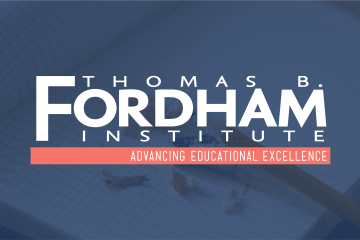Many experts have lauded community schools as a means of mitigating the impact of pandemic-era challenges facing students, but does the evidence support substantial investment? Building on the RAND Corporation’s previous research, a new working paper by researchers from Vanderbilt and RAND examines how community schools affect attendance and academic performance.
In broad terms, community schools leverage partnerships with local organizations to enhance academic and non-academic supports for students and their families. Programs can include such varied components as physical and mental health services, cultural heritage celebrations, and instruction in practical life skills from computer classes to food preparation. Previous research has suggested generally positive effects of community schools on factors like family engagement and student attendance, but these studies have been limited in their sample sizes and capacity to indicate causation.
This new research makes two key improvements. Though not necessarily nationally representative, the sample is nonetheless the largest yet, including all New York City Community Schools (NYC-CS) serving elementary and middle school students. In addition, the data run from 2014 to 2019, making the study longer-term than most of its predecessors. The study’s second noteworthy contribution lies in its statistical method, a novel amalgamation of existing methods: what researchers call a multiple rating regression discontinuity design and an additional technique known as ridge regression. This particular combination, the authors explain, compensates for potential imprecisions in the data and allows their study to imply causation, whereas other community schools studies only indicate correlation. The strategy therefore not only deepens our understanding of community schools, but also proposes a new method for evaluating other programs.
Here, analysts measured attendance using average daily attendance and chronic absenteeism, and they measured academic achievement with third through eighth graders’ scores on end-of-year math and English language arts state assessments. They also accounted for student demographics of race and ethnicity, economic disadvantage, temporary housing status, English language learner status, and disability status.
The findings were positive and statistically significant for attendance and achievement alike. Overall, daily attendance rates were 1–2 percent higher in NYC-CS compared to control schools, and chronic absenteeism rates—the percentage of students absent at least 10% of a school year—were 7–8 percent lower in NYC-CS. The reduction in chronic absenteeism occurred almost immediately, and the impact on attendance was greatest for students in the lowest and highest grades studied (K–2 and 8). On statewide assessments, NYC-CS ELA scores were about 0.08 SD higher than those of control schools, and math scores saw almost twice that level of growth, clocking in at a 0.15 SD difference. The effects for both math and ELA were largest for fourth graders and were still significant for fifth and sixth graders. For both attendance and achievement, the effect was largest in the third year of the program, which could be, as the authors note, either because students benefit from greater exposure over time to community schools services or because the programming itself improves over time.
One caveat is that the study does not parse the role of New York City’s Renewal Schools (RS) program, which aimed to support failing schools during the same time period. Many of the city’s community schools were also Renewal Schools, meaning that they also received specialized professional development, superintendent oversight, and academic interventions. The authors hold that the RS program was merely “one of the ways in which NYC implemented their community school program.” Still, given that the RS program came from a separate city initiative (and one generally considered a failure), future studies ought to consider the impact of the RS program on New York’s community schools—and perhaps whether community schools led to improvements either because or in spite of RS status.
Regardless, that NYC-CS programming bolstered both attendance and academic achievement is encouraging. Since the attendance gains occurred sooner than the academic gains, as the authors observe, the higher attendance may have led to the academic growth. If that was the case, the greater effect on math performance could have been because attendance tends to have a larger effect on performance in math than in reading. The details of the mechanism here could offer an area for future study, but until then, these promising results still advance the evidence that New York City has made a worthy investment in its community schools.
SOURCE: Lauren Covelli, John Engberg, and Isaac M. Opper, “Leading Indicators of Long-Term Success in Community Schools: Evidence from New York City,” Annenberg Institute at Brown University (November 2022).




